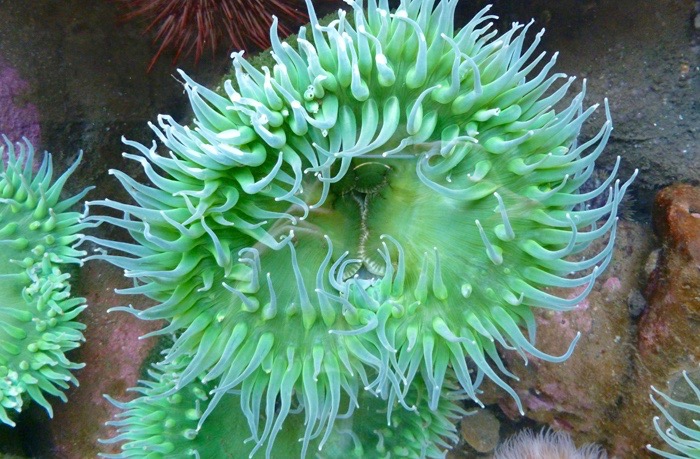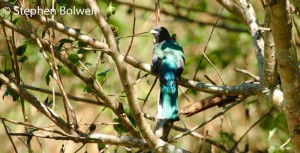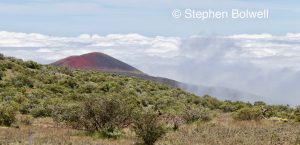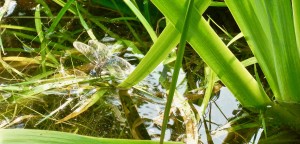As a child I spent many happy hours watching animals, especially the odd ones that other people mostly avoided… and it wasn’t long before it all made perfect sense to me. When I was old enough, I would train as a zoologist.
“What will you do with that?” people would ask. “Work in a zoo?” Well, not exactly. Rather stupidly, it had never occurred to me to ask how zoologists make a living – I’d never met one, but I was certain it wouldn’t be a total waste of time; and when I finally managed to get qualified I was determined not to end up doing anything obvious – like teaching, or hanging on at university to research how best to kill small animals in the name of pest control.
Instead I became a wildlife filmmaker specialising in the kind of animals that just aren’t cuddly – the ones without backbones that even ‘The Natural History Museum’ in London happily describes as ‘creepy crawlies’, More properly they are invertebrates and all get by with nervous systems very much different from our own.
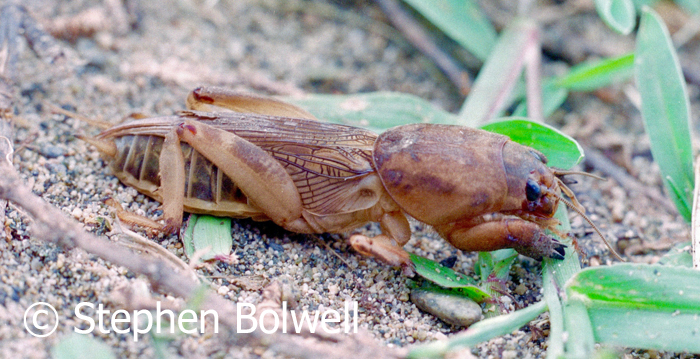
Many invertebrates have nerve bundles that act as co-ordinating centres; but it would be a stretch to describe these as brains, although technically they are clearly centres for computation.
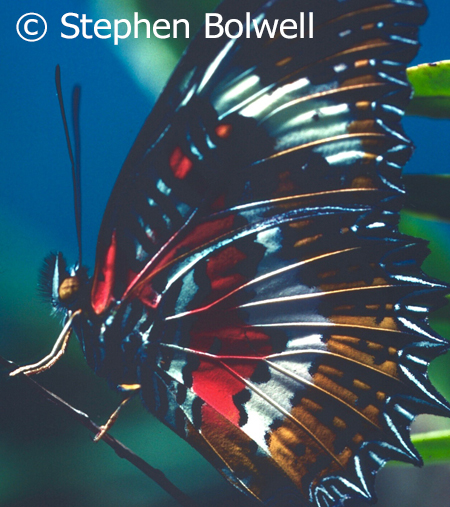
When I was at school I wanted to learn more about how such animals worked; and if I came across a dead one, I would pick it up, take it home and delve inside to try and understand how internal structure matched up to external function. My parents were very understanding: they realised that my oddness was based upon science and not just that I was completely weird. Later when I became a zoology student this odd behaviour was suddenly recognised as a skill, and one that it turned out I was good at.
Although dissecting animals didn’t seem that consequential, it did at least provide an opportunity to view the insides all sorts of animals that I would later spend hours observing from the outside. This may not seem important, but the way an animal’s nervous system is organised is fundamental to the way it behaves.
Animal behaviour is about how creatures respond to external stimuli, and the way they do this is very much tied to the way their nervous systems have evolved – what works well for one won’t necessarily work for another. It’s all about lifestyle.
A butterfly suddenly gifted with the sensory ability and nervous system of a gorilla wouldn’t last five minutes in the wild, even if such a neurological upgrade was possible. In the end, it is the precision and appropriateness of neurological responses to the environment that really counts. As humans, we are steadily losing contact with nature; if we all behaved as appropriately as an ant does in direct response to its surroundings, the World would be in better shape, but our lives of course would be far less interesting.
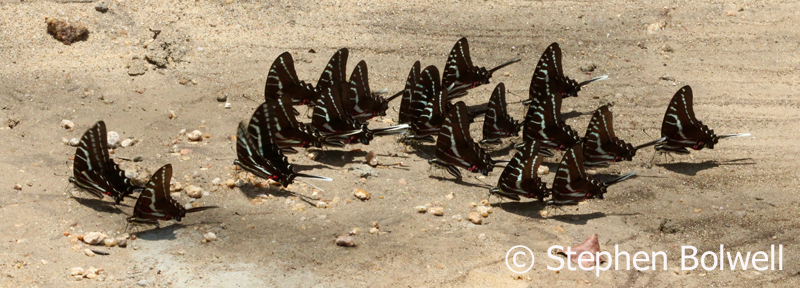
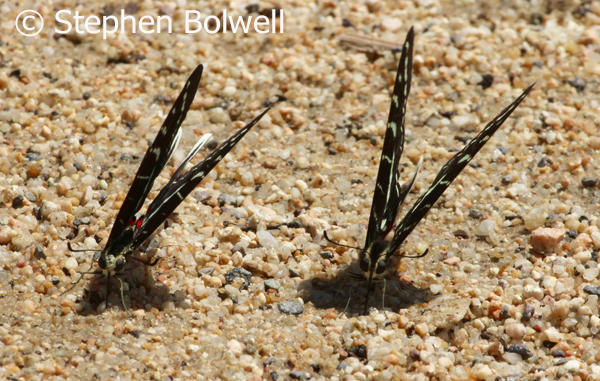
You might think my regard for invertebrate nervous systems is little more than my brain justify my wasted youth, but a careful analysis of their neural structure can provide a better understanding of our own, even allowing for the obvious differences of compexity.
Despite their simplicity, or perhaps because of it, some invertebrates appear better equipped for longterm survival than do we. Many have displayed very little change for millions of years, which suggests that keeping things simple works really well; evolution clearly follows the general rule, that if it ain’t broke, don’t fix it.
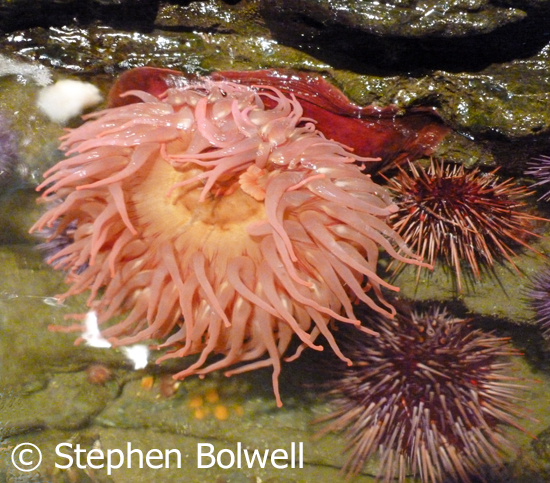
Sea anemones are predators, something that we consider a sign of superiority in more complicated animals, because vertebrate predators in particular have a lot more going on in their brains than do their herbivorous prey – wolves for example are more cunning than sheep – which appear… well, rather more sheepish.
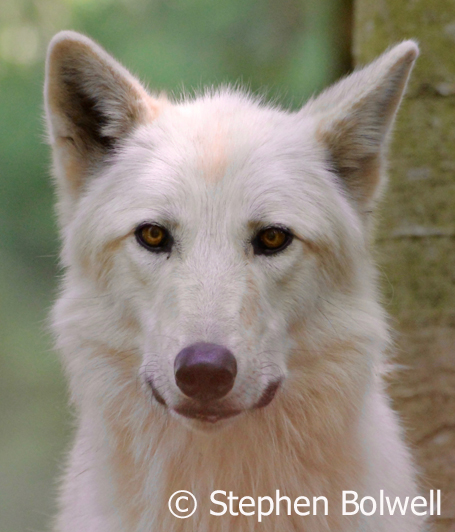
In comparison lowly creatures such as sea anemones rely entirely upon their prey floating by and are far less selective than the predators we usually notice – generally those with greater complexity. There are many uncomplicated invertebrates managing their lives with simple nerve nets, most of which do not have co-ordinating nerve bundles, and certainly nothing that comes close to anything that resembles a brain.
Nerve nets operate fairly simply – usually the greater the stimulus a jellyfish receives, the greater is its response.
In a nerve net, sensory neurones pick up signals from the environment and transmit information to other neurones that are able to discern certain patterns of activity. In jellyfish these then transmit to motor neurones that will activate muscles dedicated to short distance propulsion.
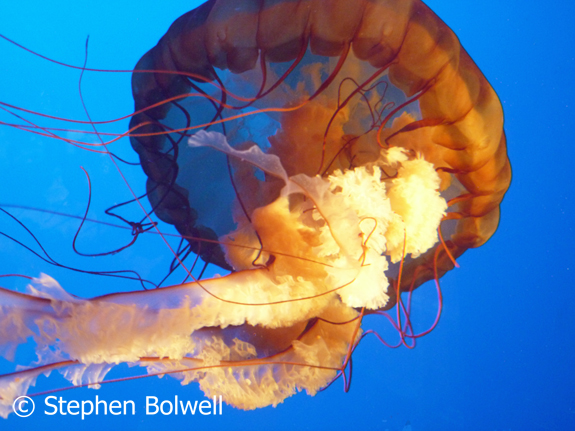
It is surprising how much can be achieved with such a simple nervous system and it is one that is fairly easy to analyse due to its obvious lack of complexity. The great thing about sea anemones, sea urchins and jellyfish, is that they are incapable of over thinking a situation, to do so would quite literally take far more nerve than they have… We all know that jellyfish are spineless creatures, which in simple terms, makes them complete no brainers.
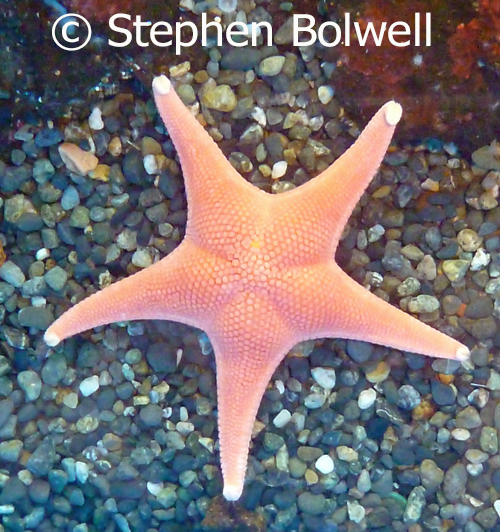
Animals that rely upon nerve nets do not, as the term implies, always have their neurones distributed evenly; sometimes these are denser in areas of greater neural activity and they may even be organised into very simple nerve masses or ganglia.
The simplest animals – such as amoeba, don’t have brains, nerve nets or anything clearly recognisable as a nervous system – essentially these blob like creatures get activated directly by external stimuli such as touch, light and chemicals.
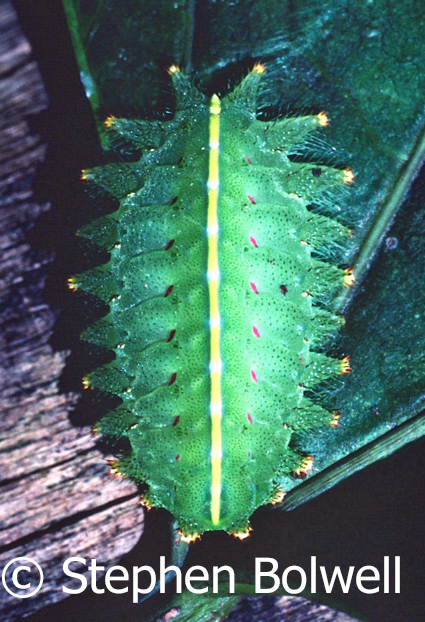
At the other end of the scale, invertebrates with greater complexity have evolved bilateral symmetry – where the right hand side of the body mirrors the left. This is a successful pattern common to a great many animals and all vertebrates; and species that display this form of symmetry require a system with far greater complexity than a nerve net to operate efficiently.
Worms have it… and unsurprisingly they have evolved with much of their sensory equipment organised at the front end, because this is the first part of the body to experience new information.
When I was a zoology student my supervisor Dr. Neil Croll introduced me to a nematode worm called Caenorhabitis elegans – this was a pivotal moment in my understanding of animal behaviour, which might sound odd, because C. elegans is only just visible to the naked eye at less than a millimetre in length. Despite its small size this worm has many plus points for study; most importantly it is not an infectious parasite and many millions can be found free living in just a handful of soil.
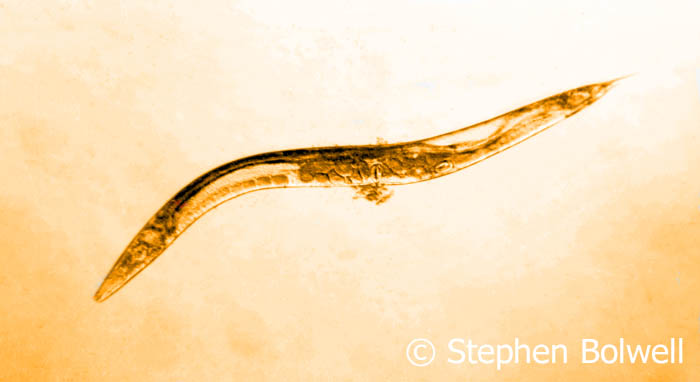
One of the reasons C. elegans is useful for scientific study is the presence of a developed nervous system – there is a nerve ring near the front end, with a number of ganglia running through the body, but in many other respects this is an uncomplicated creature.
For animal behaviourists C. elegans is a great place to start because when it receives an appropriate stimulus, it will respond without the inconsistent behaviour so often displayed by animals carrying the expensive burden of a brain.
C. elegans was the first animal to have all of it’s cells mapped – it is known where each cell starts out and where each one ends up, and all neural connections are understood. How great is that!
It was also the first animal to have its genome mapped. And my favourite fact – it was the only survivor of NASA’s Columbia space shuttle disaster when the spacecraft broke up on re-entry into the Earth’s atmosphere.
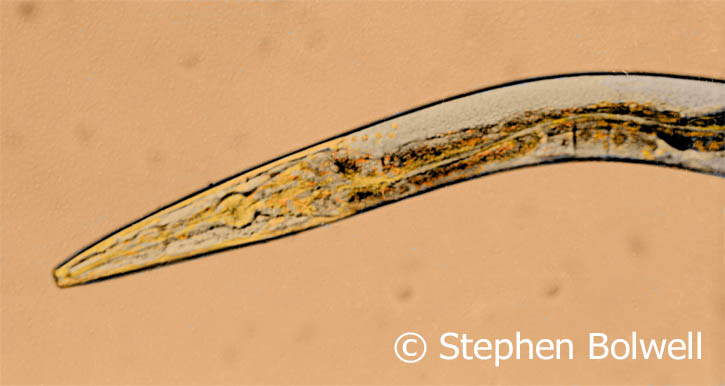
The internal structure of this worm is impressive for an animal that, in the male, has only 1036 cells, a number that does not vary – the cells simply grow as the worm gets bigger.
This little creature, has for many years been telling us interesting things about itself and also quite a lot about us, including details on the ageing process. By the time I started making observations in the mid 1970s C. elegans was already considered a key species for scientific investigation, but everything about it was new to me and a complete revelation.
I placed my worm at random on an agar plate in a petri dish, put a measured dollop of food some way off and then recorded the route left in the medium as it travelled towards its dinner. Essentially the worm made its way up a diffusing food gradient by a very simple mechanism. It travelled straight, but on sensing food began to turn; and the closer it got to food the more it turned. A food finding behaviour that is delightfully simple.
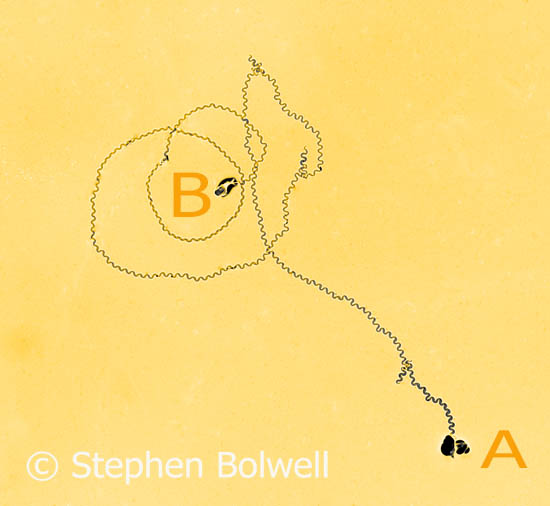
It is no surprise that the worm model has been such an evolutionary success.
As the front end of any worm progresses, it picks up available information from the environment ahead, and then its nervous system can assess various uncomplicated options: if all is well the worm might progress, but when required it can draw back a little and move off in another direction. What a worm does is simply governed by what it senses as it moves forward, and for the worm and many other uncomplicated creatures, this is a very practical way of approaching the world.
Some years ago I went to North America to film some of the oldest and most important fossils so far discovered; they are in the Burgess Shale located in the Canadian Rockies. I set up to film collections in both The Royal Ontario Museum in Toronto and the Smithsonian Institute in Washington and was lucky enough to see some of the finest specimens available from this very early period.
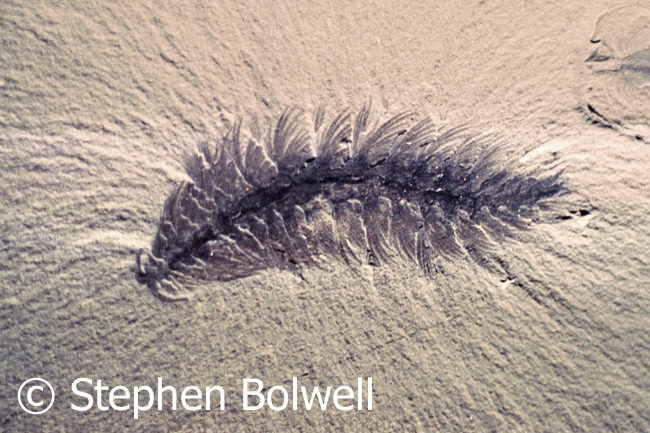
The shale includes creatures that look like sea anemones preserved in deposits laid down some 500 million years ago, along with worm like creatures similar to forms we see today; and there are many other extraordinary fossils of animals that are now lost to us, or difficult to identify. Nevertheless, the Burgess Shale is presently one of the best opportunities to look back to the Pre-Cambrian explosion, a period of time when the fundamental ecology of modern marine ecosystems was first laid down.
The Ragworm
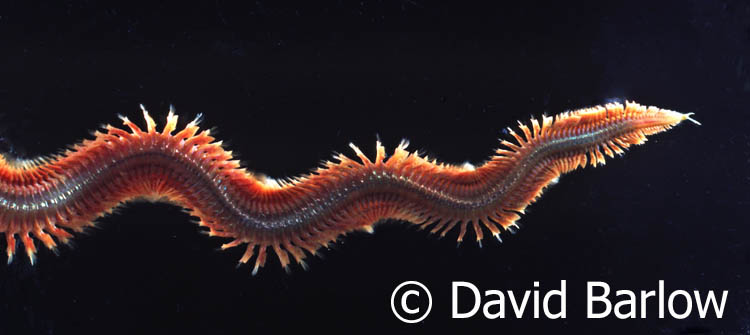
The Earthworm.
I remember seeing the anatomical arrangement (below) way back when I was a zoology student, although I haven’t found it necessary to look inside an earthworm since, because nothing has changed. Clearly a group of nerves run up to the front end where most of the sensory information is received as the worm moves forward.
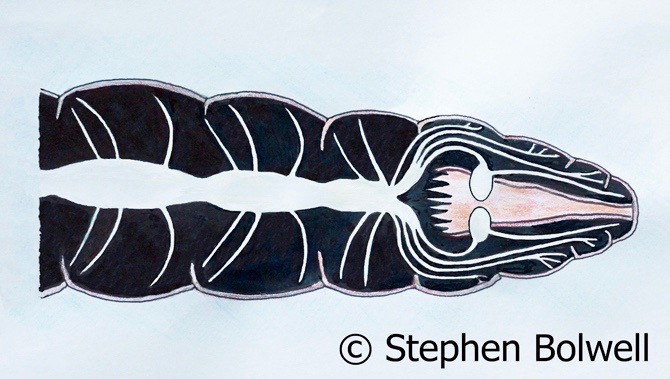
In the above schematic view most of the internal organs have been removed for clarity, but the front end of the food canal is left in place to show how the nervous system wraps around to form a couple of nerve bundles on the upper side – the closest thing a worm has to a brain. Internally, a main nerve runs down the ventral wall of the body with three nerves coming off on either side in each segment, and these mostly activate muscles for locomotion. Apart from an area dedicated to reproduction, this model repeats itself along the the length of the body and so it is only necessary to display a couple of segments.
It is believed that our ancestors were once worm like creatures and we would need to go back around 600 million years to find a common ancestor. It would seem a mistake though to conclude that we have evolved directly from worm ancestors on the same branch as the worms as we see today where the main nerve runs ventrally. To re-arrange this to the dorsal side in line with how all vertebrates are organised would require a leap of imagination, because evolution can’t retrace its steps and rearrange anatomical features without leaving a trace. Animals are stuck with what they’ve already got and must adapt from there.
Maybe at some point a worm stood on its tail, and went with Alice through into the Looking Glass World and as it did so, inverted. My student textbook on Invertebrates by A.S. Romer makes a joke about this switch with a diagram that shows a worm/vertebrate flip where the text details for the vertebrate are turned upside down. Romer then goes on to explain that this inversion creates as many problems as it answers as there are several other anatomical changes that must also occur that are difficult to explain. Maybe the Vertebrate plan was laid down far earlier. When I was a student there were various theories, but nobody seemed to know for certain.
In the Burgess Shale a ‘wormlike’ creature has been discovered that appears to have a nerve chord running down the dorsal side.
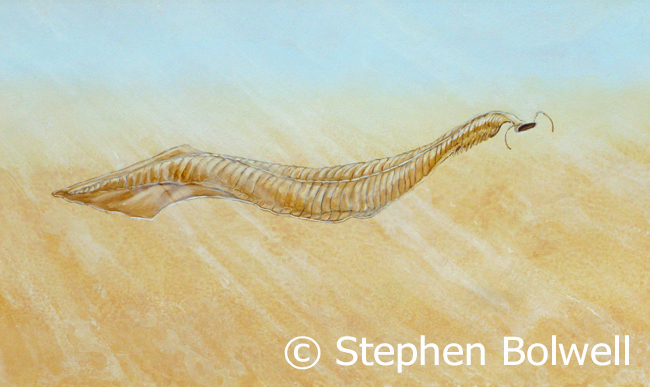
There are now better claimants to the chordate line from the Chengjiang fossil deposits in China where jawless fish have been found that predate specimens from the Burgess Shale by around 17 million years, but as I write from personal experience and haven’t had the good fortune to see these fossils, it would be cheap to make a drawing from somebody else’s photographs.
Ignoring for a minute the fossil records, another approach taken by the European Molecular Biology Laboratory published in early 2010, made a comparison of the small molecules that regulate gene expression; these from similar organs in widely different animals. A marine annelid worm Platynereis dumerilii which hasn’t changed much over 600 million years appears to have micro molecules highly specific to certain tissues including the nervous system, and these are shared similarly in the tissue of many vertebrates including ourselves, which suggests a common ancestry.
We can’t be sure if we evolved from exactly the same ancestor as the worms we see today, but go back far enough and at some stage there must have been a common ancestor and whatever it was, it won’t have been pretty.
Amphioxus.
The dubious honour of the most basic animal around today equipped with a spinal chord falls to about 30 species know as a lancelets or amphioxus – a small translucent marine creature that I was also expected to ‘look into’ as a student. Cephalochordates, are a closely related primitive form of Chordate; they display many of the attributes common to Vertebrates and this includes a brain… More truthfully this is just a bump at the head end of the nerve chord – which explains why they are not renowned as great thinkers.
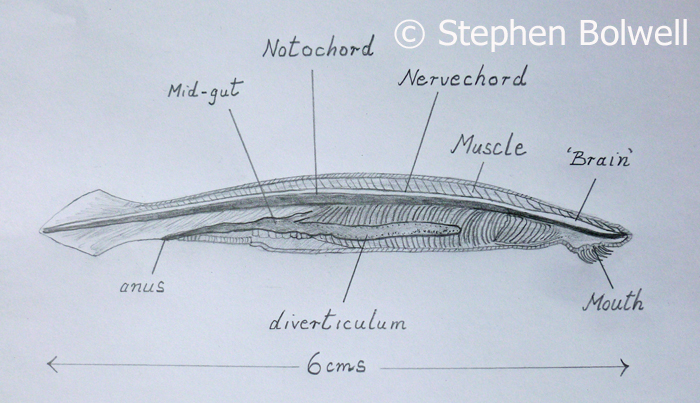
Invertebrates remain unloved by most of us, even so they are an important part of ecological systems. Animals that we should perhaps notice more and photograph when we see them to remind us of the many uncared for and unnamed species lost worldwide on a daily basis. Creatures that have been around for more than 500 million years are disappearing with increasing frequency and many are more consequential to our existence than we realise. It is as well to remember that we cannot exist entirely in a world of our own making in which only ‘the pretty things’ survive because we have chosen to protect them. We are part of an ecosystem… not a zoo.
I know there are many people who would prefer not to think we are closely related to apes let alone worms… and that’s a pity because if we could see ourselves as part of a natural progression that goes back to our invertebrate ancestors, we might have more respect for the many odd looking creatures still with us today.
The Ascent of Man – a good walk spoilt?
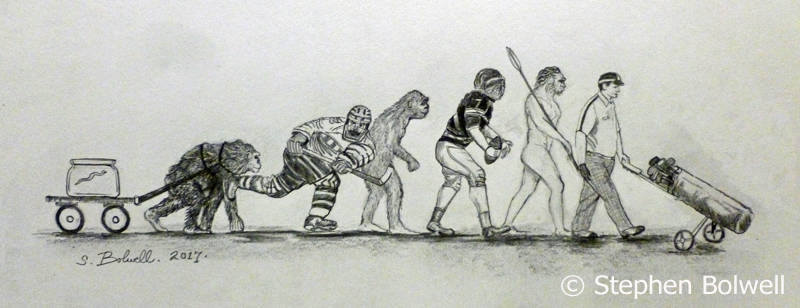
In reality the fossil record is sparse, but today we don’t have to rely upon looking for chance deposits from the distant past to gain an understanding of the natural world around us, all we have to do is look. If back in the mists of time, each strange creature could have been recorded as thoroughly as is possible today, we might have a better understanding of which of those odd looking invertebrates were truly our ancestors.
N.B. A recent paper in ‘Nature’ suggests that a micro-fossil found in China may be our oldest known ancestor. Saccorhytus coronarius was a tiny bag-like creature that probably lived between grains of sand on the sea-bed around 540 million years ago, thought to be a primitive “Deuterostome“. Deuterostomes are a broad category that includes the Vertebrates. (Source: St John’s College, University of Cambridge. Jan 2017).
With thanks to David Barlow for his Nereis picture. See David Barlow Archive.
Next time: Before We Had Brains Part 2. A look at Arthropods and other creatures with nervous systems so different from our own, they might just as well be aliens.
